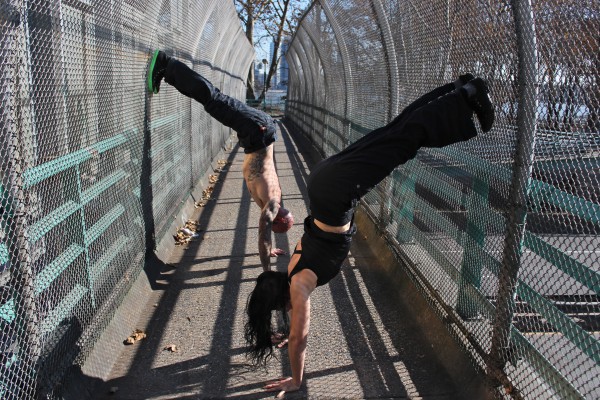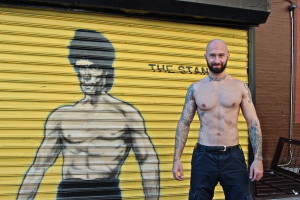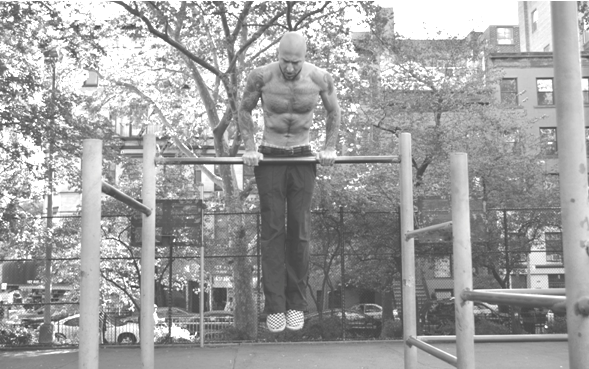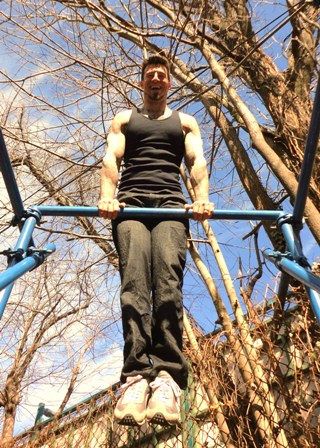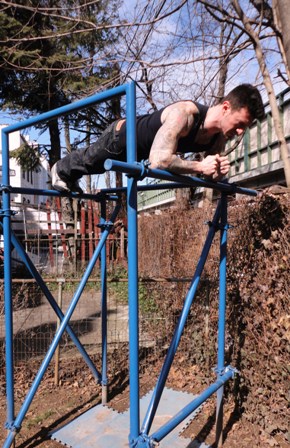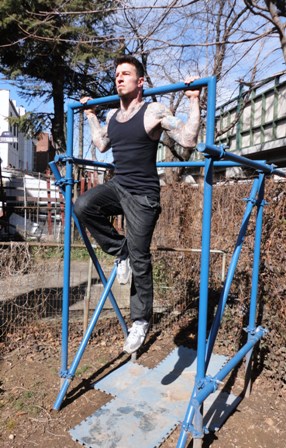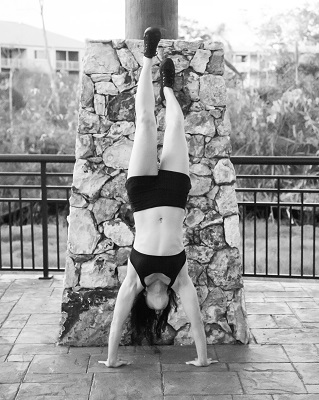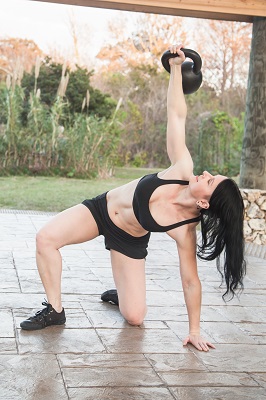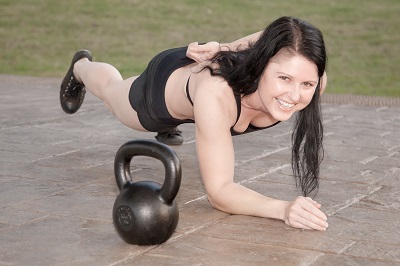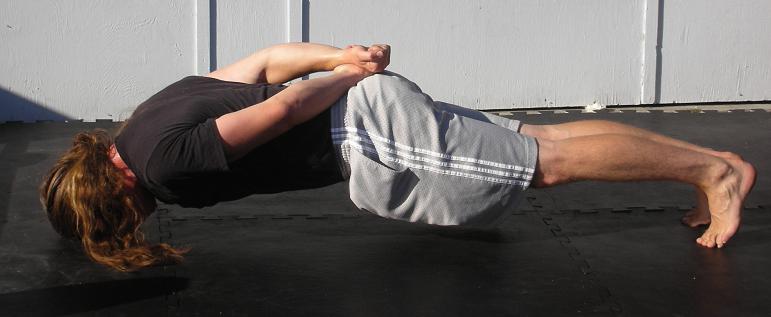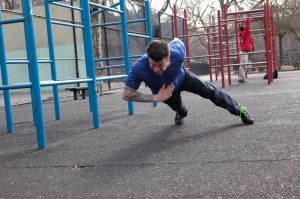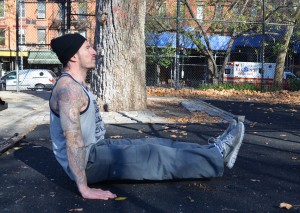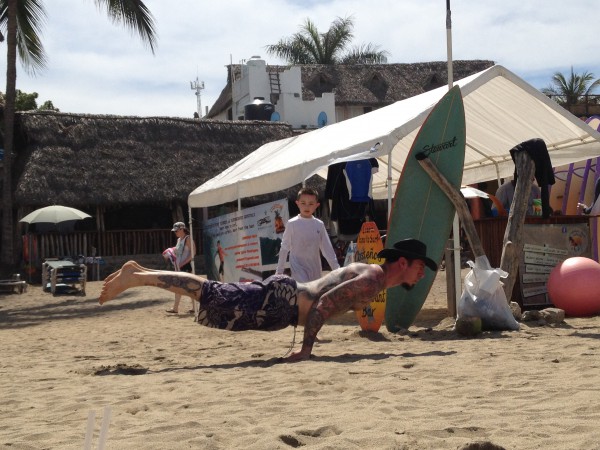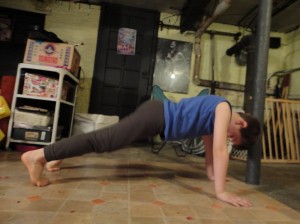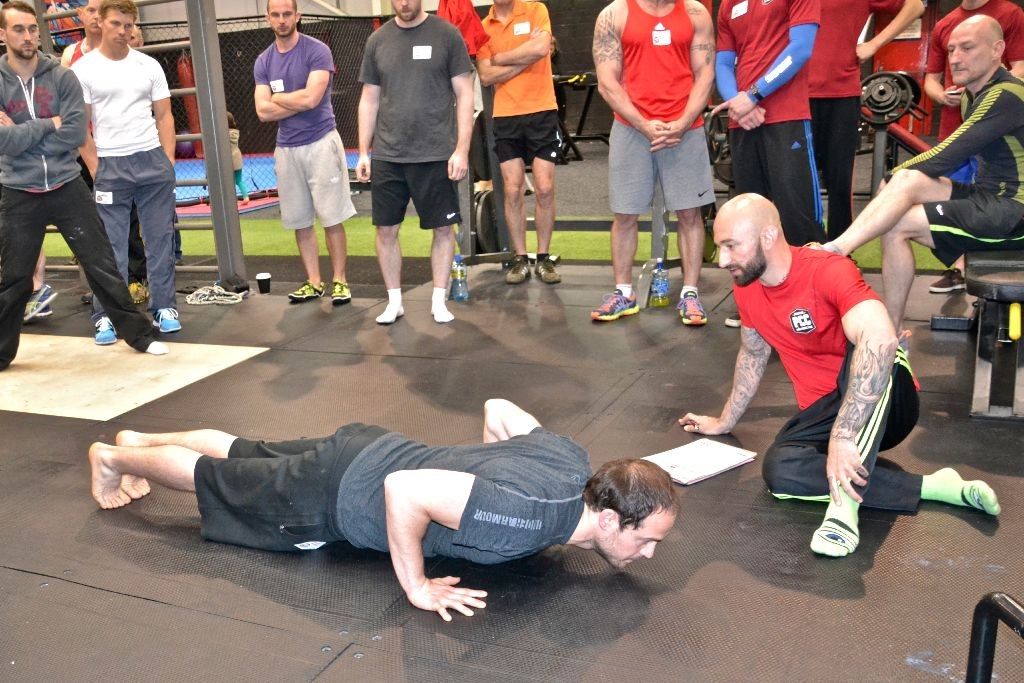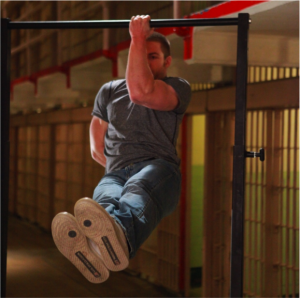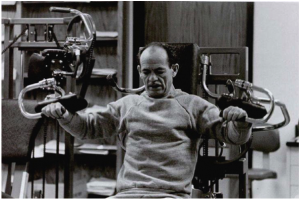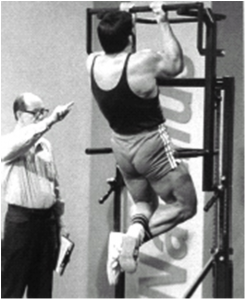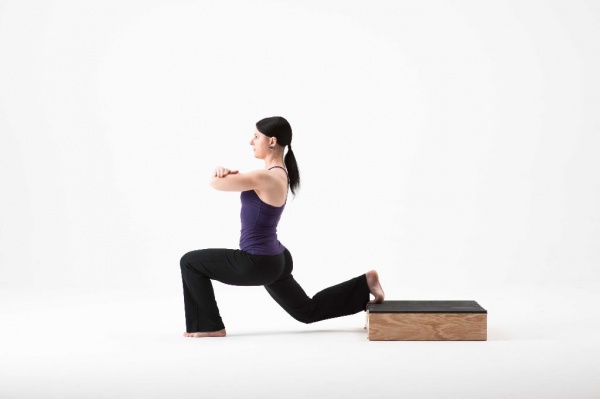
You may remember an earlier post on the PCC blog describing an example of how the “Good Behavior” routine from Convict Conditioning could easily accommodate kettlebell training. One of the absolute highlights of this past week was participating in a rigorous two day–two FULL days–photoshoot for the upcoming Dragon Door book, Neuro-Mass by Jon Bruney. While I had had a few days to look over the extensive collection of unique kettlebell, bodyweight, and specialized equipment drills and exercises, what I would be asked to specifically perform was somewhat of a mystery. Fortunately, the strength, flexibility, and coordination from long-term training with Convict Conditioning’s progressive calisthenics, and basic kettlebell work prepared me very well for this highly-varied shoot.
Even though my at-home and outdoor workouts are not especially spectacular on their own, it’s the long-term consistent practice of meticulous movement patterns and reasonable, safe strength challenges which add up solidly over time. This somewhat conservative approach helps me to maintain my strength and physique while avoiding injury. With a heavy schedule of workshops, travel, and instructing, there simply isn’t time for injury, which is all the more reason for strategic training and knowing when to back off. The approach in Convict Conditioning is absolutely perfect for the situation. Not to mention, when traveling, it’s rare that I even have to leave the privacy of my hotel room in order to finish my workout for the day. In all honestly there’s usually more useful floor (and wall) space in the room than a typical “fitness center.”
Many people ask if Convict Conditioning on its own is “enough.” Generally speaking, the short answer is yes, absolutely. The long answer is yes, but what is your specific goal? While my hybrid training with Convict Conditioning and kettlebells was entirely to credit for allowing me to shine at two days of unknown (and highly athletic) drills performed meticulously at relatively low reps for photos, I will need to do the actual Neuro-Mass routines for their full effect. Same with your sports and the specific skills required for them.
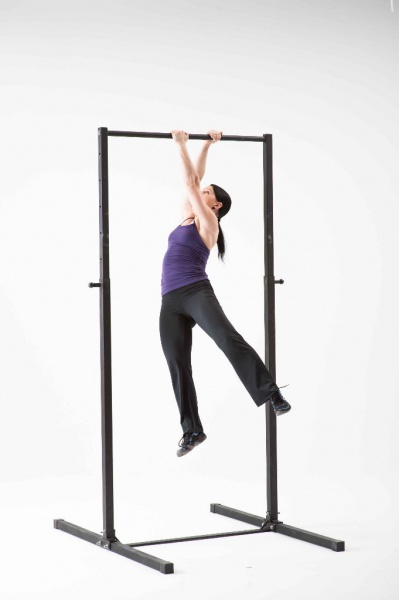
One of my absolutely most favorite new drills from Neuro-Mass is the pull-up bar walk. All the grip work from Convict Conditioning 2 along with the coordination I’ve gained from inching towards the 1-arm chin up with so much isolateral work really prepared me for that drill in particular. So much that I was able to go forwards and backwards with ease. Jon Bruney has now recommended that we all man or woman-up and work towards going forwards and backwards with this interesting drill. I also like it as it brings the fun and coordination challenge of “monkey bars” to the gym with something as simple as a pull up bar.
The strength and coordination gained from Convict Conditioning as a whole also allowed me to successfully perform (on the first try!) an incredibly cool and difficult drill–this drill is so cool that I’ve been specifically asked to not describe it before Neuro-Mass is published! Before trying it, I had no idea if I’d even be able to do it at all! Consistent practice of Progressive Calisthenics and the seemingly simple workouts from Convict Conditioning had absolutely prepared me for the unknown!
***
About Adrienne Harvey, RKCII, CK-FMS, Primal Move Nat’l Instructor: I started studying kettlebell training over three years ago and became RKC Certified in October of 2010, and became an RKC Level 2 Instructor in July 10th of 2011. Kettlebell and bodyweight training have been absolutely crucial in my personal quest for fitness, and I love sharing these ultra-effective modalities with small groups and individuals. Similarly, developing recipes to further support performance, body composition, and general enjoyment is another passion.
Go to http://www.giryagirl.com/ for more information about Adrienne.

